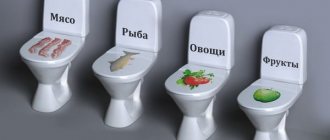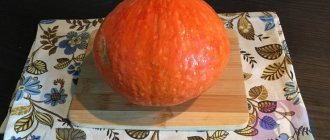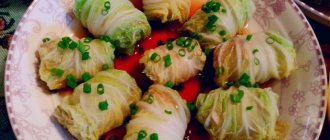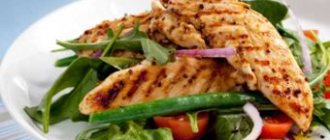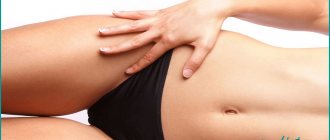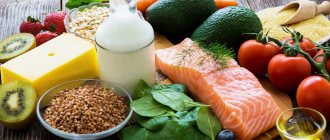General rules
With the advancement of Eastern teachings, particularly Zen Buddhism, into the West, the way of life practiced in the East began to gain popularity among Westerners and eventually gained many followers. On their basis, a nutritional method emerged, called macrobiotics (long life), aimed at ensuring longevity, health, and increasing mental/physical activity of a person.
The fundamental principle is the philosophy of balance between Yin and Yang in the body, with the correct ratio of which you can achieve harmony between the external and internal world, become healthy and filled with energy. The greatest credit for popularizing this food system in the West belongs to George Osawa. Namely, Osawa’s nutritional system is the basis for the principles of macrobiotic nutrition. According to them, all food products belong to yin (contractive, have an acidic reaction) or yang (expanding with an alkaline reaction). Yin foods are sweet, cold, passive, Yang foods are salty, hot and aggressive. According to Osawa, the “carriers” of pure (concentrated) Yang energy are eggs, meat, pumpkin, carrots, fish roe, horseradish, sage, chicory, parsley, ginseng and a number of others.
And carriers of pure Yin energy are sugar, beans, potatoes, lemon, mushrooms, cucumbers, curdled milk, margarine, eggplant, sour cream, mustard, vinegar. The main goal when compiling a macrobiotic diet is to maintain a balance of Yin and Yang energy with the exclusion from the diet of exclusively “male”/“female” foods (sugar, cheeses, dairy products, meat, berries), since it is very difficult to balance the two with each other and they can introduce an imbalance into the body. There are special tables of foods with strong, medium and weak Yin and Yang energy, which can be found on the Internet.
To the basic principles of macrobiotic nutrition:
- The diet is an integral part of an ongoing macrobiotic lifestyle, and not a temporary diet used for the purpose of weight loss/treatment.
- The diet includes only organic products without GMOs, dyes, preservatives, grown in your region of residence and in accordance with the seasons of the year.
- Food should be chewed thoroughly (at least 60 times).
- Cook/eat food only in a good mood.
- Eat food only when you feel hungry.
- Maintaining a balance in the daily menu (avoid strong yin/yang foods), the share of grains should be 50% of the daily diet, fresh and cooked vegetables - 25%, protein products (soybeans, fish, seafood) - 10% and 15% is allocated for the share of soups.
- Limiting fluid intake (no juices, tea, coffee, sugary drinks).
- When preparing dishes, only sea salt is allowed.
- Meals are served only in the “cook and eat” mode; reheating of dishes is excluded.
The main part of the diet should consist of:
- Grains of unrefined varieties (wild brown rice instead of white steamed) and local varieties (barley, buckwheat, pearl barley, millet). Grains are seen as a source of balanced yin and yang energy. It is allowed to eat them either cooked until al dente or sprouted; pasta can only be consumed from unbleached flour. Legumes (peas, beans, lentils and other macrobiota are not classified as grains, but as protein products), the share of which in the diet should be about 10%.
- Vegetables. Preference is given to round vegetables, such as root vegetables. However, potatoes (too starchy) and fresh tomatoes (too sour) are excluded from their list as “unbalanced”. It is especially recommended to include all varieties of cabbage, zucchini, radishes, carrots, turnips, pumpkin, and salad green vegetables in your diet. Their share can reach 25% of the daily diet.
- Soy products (tofu cheese, soy sprouts, soy sauce, miso soup paste) are fermented foods and have a beneficial effect on the gastrointestinal tract. It is important not to consume genetically modified soybeans.
- Fish and seafood are the main source of animal proteins. However, their consumption is limited to 2-3 times/week (mainly baked dishes from fresh white fish with a minimum of spices). Consumption of semi-finished fish products such as crab sticks is not allowed.
- Mushrooms. Refers to the protein quota. Their environmental safety is extremely important, since mushrooms can adsorb harmful emissions, pesticides, and heavy metal salts.
- Nuts/seeds. The volume of their consumption is no more than two handfuls per week. Pine nuts, hazelnuts, walnuts, almonds, peanuts, sunflower and pumpkin seeds are especially useful.
- Fruits/dried fruits. Used as dessert, 2-3 times a week. In summer and autumn, preference is given to apples, apricots, pears, plums, watermelons, peaches and melons. In winter and spring, it is preferable to consume citrus fruits and dried fruits.
- Seaweed. Recommended for daily consumption - as an additive to salad, porridge and miso soup, as a side dish for protein products.
- Salt. It alkalizes the body, but the salt should be coarsely ground sea salt or rock salt. Refined and iodized salt is excluded. It is allowed to consume salted vegetables (sauerkraut, homemade pickled cucumbers) in moderation within the food system.
The macrobiotic diet involves excluding from the diet such foods as:
- Various semi-finished and fast food products.
- Red meat and poultry, chicken eggs. They are considered from a macrobiotic position as animal corpses and carry the energy of fear and panic generated during their slaughter. In addition, animal protein from meat acidifies the blood, promotes the formation of toxins and slagging in the body, and antibiotics in feeding livestock and poultry weaken the immune system and disrupt hormonal levels.
- Milk/fermented milk products (hard cheeses inclusive) are considered in the macrobiotic nutrition system as products that are absolutely unsuitable for the body of an adult. Arguments put forward are lactose intolerance , which is inherent in almost 75% of the world's population. As for calcium, the required amount can be obtained from dark green salads, cabbage, and tofu.
- Sugar, pastries, honey, fruit jam, marshmallows, halva and other sweets with a strongly pronounced “yin”. Carbohydrates enter the body mainly in the form of complex carbohydrates found in cereals, vegetables and fruits.
- Caffeine (coffee, cocoa, tea, sweet drinks such as Pepsi, Cola) and alcohol-containing drinks, which lead the body into a state of imbalance and wash away calcium from the bones, of which the body already has little within the framework of this nutritional system.
- Alcohol is allowed to be consumed extremely rarely, exclusively in the form of a glass of dry wine.
There are 10 steps in the macrobiotic nutrition system (from -3 to +7). Level -3 corresponds to modern nutrition, and levels 5, 6 and 7 relate to therapeutic nutrition. Great importance is also attached to cooking methods, which influence the ratio of Yin and Yang in food. Thus, it is generally accepted that the “janization” of food is promoted by boiling, drying, pressing, long-term storage, salting, and its “inization” by fermentation, moistening, cooling, softening, boiling and baking until tender.
Cooking must take place over fire; microwave and electric ovens are not permitted. Plastic packaging for food storage is not permitted. Utensils made of cast iron, glass and wood are allowed. Steaming is considered the best way to prepare dishes. From an energy point of view, protein-rich foods are best baked. It is strictly not recommended to consume fried foods. Diet: 4 times a day.
Description of feeding method
Translated from ancient Greek, macrobiotic means “long life,” and this term can be found already in the works of Hippocrates. The first mention of the technique that served as the basis for the modern macrobiotic diet is found in the records of Japanese doctors in the 19th century, but it gained popularity in the West thanks to George Osawa, an American physician and philosopher of Japanese origin. His book Macrobiotic Zen, published in the late 1960s, became a real bestseller and attracted many new supporters of this Eastern nutritional system.
Macrobiotics is based on the idea that the whole world consists of Yin and Yang energies, masculine and feminine. To establish a balance with the outside world and achieve harmony and enlightenment, it is necessary to balance these two energies, including in the diet. In the Eastern tradition, Yin implies the feminine principle. Yin energy foods include phosphorus and potassium, such as fruits, berries, dairy products, and mushrooms. Food where Yang energy predominates has an alkaline environment and contains sodium and potassium. These include fish, meat, and all types of hard cheeses.
Adherents of macrobiotics argue that when consuming excessive amounts of foods containing Yin energy, energy hunger develops, as a result of which both fat deposits and muscle tissue are burned, and the body becomes susceptible to infections. If you abuse products with Yang energy, which contain large amounts of proteins and proteins, disorders of the musculoskeletal system occur. Only with the correct balance of Yin and Yang can the spirit and body be strengthened, and imbalances lead to illness and weaken a person.
Authorized Products
The macrobiotic diet includes:
- Unrefined grains (wild brown rice, pearl barley, barley, buckwheat, millet) and pasta made from unrefined flour, rye/whole grain bread, crispbread.
- Protein products (low-fat types of fresh white fish - pike perch, carp, hake, pike, cod, mainly baked with a minimum of spices), seafood - shrimp, mussels, squid, seaweed, soy products - tofu soy cheese, milk, mushrooms , nuts/seeds (pine nuts, hazelnuts, walnuts, almonds, peanuts, sunflower and pumpkin seeds).
- Various types of vegetables (cucumber, asparagus, cabbage, bell pepper, celery, garlic, carrots, garden greens, beets, onions, spinach, lettuce) from which vegetable stews, cream soups, casseroles, stewed, boiled or baked vegetables, seasoned with olive oil are prepared or lemon juice.
- First (cold) pressed vegetable oils - olive, flaxseed, sunflower in small quantities.
- Fruits are not sweet (green apples, plums, apricots, cherries, melons, peaches, citrus fruits).
- Rosehip decoction, still mineral water, herbal/green teas, smoothies.
Table of permitted products
| Proteins, g | Fats, g | Carbohydrates, g | Calories, kcal | |
Vegetables and greens | ||||
| vegetables legumes | 9,1 | 1,6 | 27,0 | 168 |
| eggplant | 1,2 | 0,1 | 4,5 | 24 |
| dried white cabbage | 15,0 | 1,4 | 48,0 | 278 |
| broccoli | 3,0 | 0,4 | 5,2 | 28 |
| boiled broccoli | 3,0 | 0,4 | 4,0 | 27 |
| Brussels sprouts | 4,8 | 0,0 | 8,0 | 43 |
| kohlrabi cabbage | 2,8 | 0,0 | 10,7 | 42 |
| red cabbage | 0,8 | 0,0 | 7,6 | 24 |
| cabbage | 1,2 | 0,2 | 2,0 | 16 |
| savoy cabbage | 1,2 | 0,1 | 6,0 | 28 |
| boiled cauliflower | 1,8 | 0,3 | 4,0 | 29 |
| watercress | 2,3 | 0,1 | 1,3 | 11 |
| red onion | 1,4 | 0,0 | 9,1 | 42 |
| bulb onions | 1,4 | 0,0 | 10,4 | 41 |
| carrot | 1,3 | 0,1 | 6,9 | 32 |
| cucumbers | 0,8 | 0,1 | 2,8 | 15 |
| olives | 0,8 | 10,7 | 6,3 | 115 |
| salad pepper | 1,3 | 0,0 | 5,3 | 27 |
| radish | 1,2 | 0,1 | 3,4 | 19 |
| arugula | 2,6 | 0,7 | 2,1 | 25 |
| celery | 0,9 | 0,1 | 2,1 | 12 |
| dill | 2,5 | 0,5 | 6,3 | 38 |
| zucchini | 1,5 | 0,2 | 3,0 | 16 |
| garlic | 6,5 | 0,5 | 29,9 | 143 |
| lentils | 24,0 | 1,5 | 42,7 | 284 |
Fruits | ||||
| apricots | 0,9 | 0,1 | 10,8 | 41 |
| pineapples | 0,4 | 0,2 | 10,6 | 49 |
| oranges | 0,9 | 0,2 | 8,1 | 36 |
| watermelon | 0,6 | 0,1 | 5,8 | 25 |
| cherry | 0,8 | 0,5 | 11,3 | 52 |
| grapefruit | 0,7 | 0,2 | 6,5 | 29 |
| pears | 0,4 | 0,3 | 10,9 | 42 |
| figs | 0,7 | 0,2 | 13,7 | 49 |
| lemons | 0,9 | 0,1 | 3,0 | 16 |
| mango | 0,5 | 0,3 | 11,5 | 67 |
| tangerines | 0,8 | 0,2 | 7,5 | 33 |
| peaches | 0,9 | 0,1 | 11,3 | 46 |
| pomelo | 0,6 | 0,2 | 6,7 | 32 |
| plums | 0,8 | 0,3 | 9,6 | 42 |
| feijoa | 1,0 | 1,0 | 11,0 | 49 |
| cherries | 1,1 | 0,4 | 11,5 | 50 |
| mulberry | 0,7 | 0,0 | 13,6 | 52 |
| apples | 0,4 | 0,4 | 9,8 | 47 |
| baked sweet and sour apples | 0,5 | 0,5 | 12,3 | 59 |
Mushrooms | ||||
| mushrooms | 3,5 | 2,0 | 2,5 | 30 |
Nuts and dried fruits | ||||
| nuts | 15,0 | 40,0 | 20,0 | 500 |
| almond | 18,6 | 57,7 | 16,2 | 645 |
| sunflower seeds | 20,7 | 52,9 | 3,4 | 578 |
Cereals and porridges | ||||
| buckwheat (kernel) | 12,6 | 3,3 | 62,1 | 313 |
| oatmeal with water | 3,0 | 1,7 | 15,0 | 88 |
| cereals | 11,9 | 7,2 | 69,3 | 366 |
| pearl barley porridge on water | 3,1 | 0,4 | 22,2 | 109 |
| millet porridge | 4,7 | 1,1 | 26,1 | 135 |
| boiled brown rice | 2,6 | 0,9 | 22,8 | 110 |
Bakery products | ||||
| Rye bread | 6,6 | 1,2 | 34,2 | 165 |
| whole grain bread | 10,1 | 2,3 | 57,1 | 295 |
Cheeses and cottage cheese | ||||
| curd tofu | 8,1 | 4,2 | 0,6 | 73 |
Fish and seafood | ||||
| squid | 21,2 | 2,8 | 2,0 | 122 |
| shrimps | 22,0 | 1,0 | 0,0 | 97 |
| mussels | 9,1 | 1,5 | 0,0 | 50 |
| seaweed | 0,8 | 5,1 | 0,0 | 49 |
| zander | 19,2 | 0,7 | — | 84 |
| cod | 17,7 | 0,7 | — | 78 |
| hake | 16,6 | 2,2 | 0,0 | 86 |
| pike | 18,4 | 0,8 | — | 82 |
Oils and fats | ||||
| grape seed oil | 0,0 | 99,9 | 0,0 | 899 |
| linseed oil | 0,0 | 99,8 | 0,0 | 898 |
| olive oil | 0,0 | 99,8 | 0,0 | 898 |
| sunflower oil | 0,0 | 99,9 | 0,0 | 899 |
Non-alcoholic drinks | ||||
| mineral water | 0,0 | 0,0 | 0,0 | — |
| instant chicory | 0,1 | 0,0 | 2,8 | 11 |
| green tea | 0,0 | 0,0 | 0,0 | — |
Juices and compotes | ||||
| rose hip juice | 0,1 | 0,0 | 17,6 | 70 |
| * data is per 100 g of product | ||||
Macrobiotics - the Zen diet for longevity
The founder of the modern doctrine of macrobiotic nutrition was George Ozawa. This is not a nutritionist at all, but a Japanese philosopher who studied macrobiotics for almost half a century before creating his own nutritional system to achieve harmony with the world and himself. His scientific work entitled “Zen Macrobiotics” became a real bible for those who decided, through the correction of eating habits, to achieve complete healing of the body, aimed at curing all diseases and longevity.
George Ozawa's original method for achieving maximum health involves going through seven stages, at the last of which a person switches to eating exclusively grains. According to the philosopher, cereal products are the most useful and easily digestible food for the human body . The author strongly recommends considering macrobiotics not only as an effective way to correct the figure, but also as a way of life that promotes complete physical and mental recovery.
In his teachings, Ozawa does not determine the duration of each stage; it is individual for each person and will depend on his willpower, state of health and emotional state. The main thing when following the system is not to skip any of the stages, to smoothly move from one step to another. A brief description of each stage of Ozawa’s Zen diet can be found in the table:
| Diet stage | Number of grains in the diet | Amount of vegetables in the diet | Amount of legumes in the diet | Amount of lean meat in the diet | Notes |
| First | 40% | 30% | 10% | 20% | Vegetables can be eaten raw and steamed, but not in the form of salads |
| Second | 50% | 30% | 10% | 10% | The meat must be dietary white (chicken, rabbit, turkey, fish) |
| Third | 60% | 30% | 10% | – | At this stage, the author recommends completely abstaining from foods of animal origin. |
| Fourth | 70% | 20% | 10% | – | At any stage you can add mushrooms to soups and porridges |
| Fifth | 80% | 20% | – | – | At this stage, any soups are completely excluded from the macrobiotic diet. |
| Sixth | 90% | 10% | – | – | The amount of vegetables consumed is kept to a minimum |
| Seventh | 100% | – | – | – | You need to eat exclusively cereals, boiled, raw or fried, but without any chemical processing or grinding |
Rules and principles of diet
The macrobiotic nutrition system according to George Ozawa has its own rules that must be followed if you decide to switch to such a diet in order to lose weight or improve the overall health of the body:
- You can eat only natural products, ideally grown in environmentally friendly conditions near your place of residence.
- The basis of the diet should be grain products (brown rice, buckwheat, barley, oats, rye, corn, millet).
- In addition to cereals, there will be fish, lean meat, vegetables, fruits, legumes, nuts and, of course, algae, because they are rich in various vitamins and microelements, so they are very beneficial for the body.
- While following a macrobiotic diet, you can drink unsweetened drinks (still mineral water, green and herbal tea, compotes). You will have to give up alcohol, coffee and cocoa completely.
- Fruits should be included in the diet to a minimum, as they contain a lot of sugar. It is better if it is fresh seasonal fruits or dried fruits. Fruit juices and tropical fruits (including bananas, kiwi, citrus fruits) are prohibited for consumption according to macrobiotic rules.
- You should also completely exclude sugar in all its forms from the menu - artificial sweets, baked goods, soda, white bread, pasta, etc.
- To improve the taste of diet dishes, you can flavor them with sea salt and natural spices, but it is better to keep their quantity to a minimum. It is allowed to season food with unrefined sesame oil.
- It is allowed to eat greens in unlimited quantities (dill, parsley, lettuce, celery stalks, green onions).
- When following a macrobiotic diet, the method of preparing food is of great importance: food can be boiled, stewed, baked, or steamed. Frying is strictly prohibited.
- You cannot eat fatty, spicy, or smoked foods on such a diet. The taboo also applies to dairy products with a high percentage of fat, semi-finished products, canned food, food containing artificial flavors, dyes, flavors, and preservatives.
- Some vegetables are also prohibited under macrobiotics: potatoes, tomatoes, zucchini.
List of foods with yin energy
According to Eastern macrobiotic philosophy, all products are divided into two conditional groups. Yin foods include:
- lemon;
- sugar;
- vinegar;
- mustard;
- sour cream;
- margarine;
- curdled milk;
- cucumbers;
- beans;
- potato;
- eggplant;
- mushrooms.
Products with Yang energy
The category of products with Yang energy includes:
- horseradish;
- parsley;
- carrot;
- ginseng;
- chicory;
- sage;
- eggs;
- meat;
- fish and fish roe;
- pumpkin.
Fully or partially limited products
The macrobiotic diet excludes from the diet:
- Bakery products and pasta made from refined flour, pastries, white rice.
- Semi-finished products, fast food products, animal fats, red meat, dairy/fermented milk products, poultry, rabbit, fatty fish, sausages, smoked meats, canned food, offal.
- Sugar, ice cream, jam, preserves, pastille, halva, honey, products containing cream, chocolate, sweets.
- Products containing caffeine (tea, coffee, cocoa, drinks such as Pepsi, Cola) and alcohol-containing drinks.
Table of prohibited products
| Proteins, g | Fats, g | Carbohydrates, g | Calories, kcal | |
Vegetables and greens | ||||
| potato | 2,0 | 0,4 | 18,1 | 80 |
| tomatoes | 0,6 | 0,2 | 4,2 | 20 |
Fruits | ||||
| bananas | 1,5 | 0,2 | 21,8 | 95 |
| mango | 0,5 | 0,3 | 11,5 | 67 |
Berries | ||||
| grape | 0,6 | 0,2 | 16,8 | 65 |
Snacks | ||||
| potato chips | 5,5 | 30,0 | 53,0 | 520 |
Cereals and porridges | ||||
| porridge | 3,3 | 1,2 | 22,1 | 102 |
| rice | 6,7 | 0,7 | 78,9 | 344 |
| white rice | 6,7 | 0,7 | 78,9 | 344 |
Flour and pasta | ||||
| pasta | 10,4 | 1,1 | 69,7 | 337 |
| pancakes | 6,1 | 12,3 | 26,0 | 233 |
| vareniki | 7,6 | 2,3 | 18,7 | 155 |
| pancakes | 6,3 | 7,3 | 51,4 | 294 |
| dumplings | 11,9 | 12,4 | 29,0 | 275 |
Bakery products | ||||
| buns | 7,2 | 6,2 | 51,0 | 317 |
| bread | 7,5 | 2,1 | 46,4 | 227 |
Confectionery | ||||
| jam | 0,3 | 0,2 | 63,0 | 263 |
| jam | 0,3 | 0,1 | 56,0 | 238 |
| candies | 4,3 | 19,8 | 67,5 | 453 |
| cookie | 7,5 | 11,8 | 74,9 | 417 |
| cake | 3,8 | 22,6 | 47,0 | 397 |
| jam | 0,4 | 0,2 | 58,6 | 233 |
| dough | 7,9 | 1,4 | 50,6 | 234 |
Cakes | ||||
| cake | 4,4 | 23,4 | 45,2 | 407 |
Chocolate | ||||
| chocolate | 5,4 | 35,3 | 56,5 | 544 |
Raw materials and seasonings | ||||
| seasonings | 7,0 | 1,9 | 26,0 | 149 |
| mayonnaise | 2,4 | 67,0 | 3,9 | 627 |
| honey | 0,8 | 0,0 | 81,5 | 329 |
Dairy | ||||
| milk | 3,2 | 3,6 | 4,8 | 64 |
| condensed milk | 7,2 | 8,5 | 56,0 | 320 |
Cheeses and cottage cheese | ||||
| cheese | 24,1 | 29,5 | 0,3 | 363 |
| amber processed cheese | 7,0 | 27,3 | 4,0 | 289 |
| cottage cheese 18% (fat) | 14,0 | 18,0 | 2,8 | 232 |
Meat products | ||||
| pork | 16,0 | 21,6 | 0,0 | 259 |
| pork fat | 1,4 | 92,8 | 0,0 | 841 |
| salo | 2,4 | 89,0 | 0,0 | 797 |
Sausages | ||||
| boiled sausage | 13,7 | 22,8 | 0,0 | 260 |
| smoked sausage | 28,2 | 27,5 | 0,0 | 360 |
| smoked sausage | 9,9 | 63,2 | 0,3 | 608 |
| sausages | 10,1 | 31,6 | 1,9 | 332 |
| sausages | 12,3 | 25,3 | 0,0 | 277 |
Bird | ||||
| smoked chicken | 27,5 | 8,2 | 0,0 | 184 |
| duck | 16,5 | 61,2 | 0,0 | 346 |
| goose | 16,1 | 33,3 | 0,0 | 364 |
Fish and seafood | ||||
| salted fish | 19,2 | 2,0 | 0,0 | 190 |
| caviar | 36,0 | 10,2 | 0,0 | 123 |
| canned fish | 17,5 | 2,0 | 0,0 | 88 |
| semi-finished fish products | 12,5 | 6,7 | 14,7 | 209 |
Oils and fats | ||||
| butter | 0,5 | 82,5 | 0,8 | 748 |
| creamy margarine | 0,5 | 82,0 | 0,0 | 745 |
| coconut oil | 0,0 | 99,9 | 0,0 | 899 |
| vegetable-fat spread | 0,0 | 40,0 | 0,0 | 360 |
| animal fat | 0,0 | 99,7 | 0,0 | 897 |
| cooking fat | 0,0 | 99,7 | 0,0 | 897 |
Alcoholic drinks | ||||
| white dessert wine 16% | 0,5 | 0,0 | 16,0 | 153 |
| vodka | 0,0 | 0,0 | 0,1 | 235 |
| cognac | 0,0 | 0,0 | 0,1 | 239 |
| liquor | 0,3 | 1,1 | 17,2 | 242 |
| beer | 0,3 | 0,0 | 4,6 | 42 |
Non-alcoholic drinks | ||||
| cola | 0,0 | 0,0 | 10,4 | 42 |
| coffee | 0,2 | 0,0 | 0,3 | 2 |
| Pepsi | 0,0 | 0,0 | 8,7 | 38 |
| sprite | 0,1 | 0,0 | 7,0 | 29 |
| energy drink | 0,0 | 0,0 | 11,3 | 45 |
| * data is per 100 g of product | ||||
Products
According to macrobiotics, all products are divided into two groups.
Yin products
They have an acid reaction. Main characteristics: sweet, passive, cold. “Pure”, strong representatives of yin:
- milk;
- sugar;
- fruits and berries;
- preservatives.
Their excess provokes a lack of energy, leads to weight loss, weakens the immune system, and becomes an impetus for the development of many diseases.
Yang products
They have an alkaline reaction. Main characteristics: salty, aggressive, hot. “Pure”, strong representatives of yang:
- meat;
- hard cheese;
- eggs;
- fish.
They are of animal origin, so their excess also negatively affects the functioning of the body.
Distribution of products into yin and yang groups:
Note. For different followers of macrobiotic nutrition, the same product can be attributed to different energy sources - yin or yang. This is a consequence of the fact that this teaching does not have a single basis, confirmed by scientific research. For example, some believe that absolutely all fish carry the masculine principle. Others divide fish varieties into yin and yang. Such discrepancies apply to almost all food categories.
Main differences:
Please note that, again due to the lack of a unified scientific base, not all characteristics of yin and yang foods presented in this table correspond to the distribution of products into these groups. For example, a carrot (yang) is oblong, and a watermelon (yin) is round. Full-fat kefir (yin) is high-calorie, and low-fat kefir (yang) is low-calorie. There are quite a lot of such inconsistencies in this system.
Attention! Before trying macrobiotic nutrition for yourself, keep in mind that official medicine does not recognize its practical benefits. Scientific studies have not confirmed that it is an effective treatment for cancer, as its followers claim, and also does not provide the body with all the necessary nutrients.
Macrobiotic diet menu for a week (Diet)
The nutrition menu is compiled based on the principles of the macrobiotic diet and the list of foods allowed for consumption, taking into account recommended cooking methods. Below is a sample menu for several days:
1st day
| Breakfast |
|
| Lunch |
|
| Dinner |
|
| Dinner |
|
2nd day
| Breakfast |
|
| Lunch |
|
| Dinner |
|
| Dinner |
|
3rd day
| Breakfast |
|
| Lunch |
|
| Dinner |
|
| Dinner |
|
Reviews from doctors
Anatoly Petrovich, 65 years old
As an oncologist with 40 years of practice, I can say that macrobiotic nutrition is indicated for the prevention of malignant tumors and the treatment of cancer in the early stages. Reasonable restriction of proteins and fats in the diet in combination with drug treatment helps the patient stop the growth of cancer cells and prolong life.
Olga, 31 years old
I consider macrobiotics one of the best ways to combat obesity, but you shouldn’t get too carried away with the technique - long-term restriction of the body in proteins and fats leads to irreversible health consequences. I recommend my patients to practice a macrobiotic diet in courses of 2 weeks with two-month breaks on proper nutrition.
Valentina Viktorovna, 45 years old
I am categorically against this system - it is unbalanced, illiterate, and useless. It may help you lose weight, but the price for such weight loss is health. If you really want to lose some extra weight, do it the most natural way: start eating less and moving more.
Macrobiotic Nutrition Recipes
Below are some nutritional recipes for the macrobiotic diet.
Bean soup with mushrooms
Pre-cook the beans for 10-12 hours and cook them in lightly salted water until tender. Rinse the porcini mushrooms thoroughly in warm water, soak in cold water for 2 hours and boil for 10 minutes, chop. Add the peeled onion to the broth and cook for 15 minutes. Strain the prepared broth, add carrots, diced onions, beans and mushrooms, cook until tender. Sprinkle with herbs before serving.
Fish baked in foil
Remove the entrails from any fish carcass, wash and dry with a towel. Heat the oven to 200° C. Grease the baking foil with sunflower oil and put a small onion cut into rings. Rub the fish with a spice mixture consisting of tarragon, basil, thyme and white pepper, half a lemon, a sprig of dill), and salt. Wrap the fish in foil and bake for about 30 minutes. This dish can be combined with any vegetable side dish.
Vegetable salad
3 cups chopped fresh lettuce, 1/2 red onion, one carrot, cucumber, celery. Slice all vegetables thinly and mix thoroughly. Lightly salt, season with vegetable oil/lemon juice, garnish with garden herbs.
Recipes for popular macrobiotic dishes
Preparing macrobiotic food is very simple, because from basic products (grains and vegetables) you can prepare many tasty, satisfying and healthy dishes. We bring to your attention recipes for preparing several of them.
Oatmeal with dried fruits
Macrobiotic porridge should be prepared not from oatmeal, but from whole oat grains. To do this, you need to soak it in cold water in the evening. In the morning, rinse the oats, add a small amount of water and cook over low heat for 15 minutes, stirring constantly. To make the porridge slightly sweet and get the aroma of fruit, add a handful of raisins, chopped dried apricots, figs and prunes, then boil a little more. The finished porridge should be cooled to body temperature and consumed slowly, chewing each spoon thoroughly. This breakfast will give you fullness, a boost of strength and vigor for the whole day.
Vegetable soup with millet
Macrobiotic soup with millet is very easy and simple to prepare. To prepare it, add chopped vegetables, such as cauliflower, broccoli, peppers, green peas and zucchini, to a pan of boiling water. The onion should be cut into small cubes and sautéed in a small amount of vegetable oil. Grate the carrots on a medium grater and add to the onions, saute them for a couple more minutes. The finished roast should be added to the soup, and also a few tablespoons of millet cereal should be added. Salt the soup, add bay leaf and cook for another 10 minutes
It is important to salt the soup very little and use natural sea salt for this. When the soup is almost ready, you need to add chopped fresh parsley and dill, after which you need to immediately remove it from the heat.
Healthy and tasty vegetable soup with millet is ready! It will be an excellent lunch option for any healthy eating enthusiast.
Steamed buckwheat with chicken liver
To prepare this complete dish, you need to pour two volumes of boiling water over buckwheat in the evening, cover with a lid and leave on the stove. In the morning it will be completely ready for use and will not require further cooking. It is this type of preparation of cereals that retains maximum benefits, vitamins and minerals. However, it would be difficult to eat buckwheat alone without salt and vegetables, so start preparing the chicken liver. To do this, you need to clean it of fat and films, rinse thoroughly under running water and cut into small pieces. Cut the onion into medium cubes and fry in a small amount of vegetable oil for 5 minutes. Add the liver to the onion, lightly salt and pepper it, continue frying the ingredients until cooked. Serve the buckwheat on a large plate with a small amount of chicken liver and onion on it. The slight piquancy of the liver will perfectly balance the bland buckwheat, making it tasty and healthy
This dish can be enjoyed for dinner, but it is important not to forget to adhere to the proportions of the ratio of meat and grains
Fresh zucchini salad
Almost no macrobiotic meal occurs without fresh vegetables. Macrobiotics does not recommend eating complex salads, as they contain a large number of components that are very difficult to balance with each other. In order not to eat vegetables just like that, but to “taste” them a little, you can prepare light salads from a small amount of neutral products. A fresh zucchini salad would be an ideal option. To prepare it, grate zucchini and carrots on a Korean salad grater and mix them. Add to them 1 tablespoon of olive oil, a few drops of lemon juice, a little coriander and 1 clove of garlic. All ingredients must be mixed thoroughly, then put the salad in the refrigerator for 30 minutes. After just half an hour, the vegetables will release juice and become soft and elastic. Mix the salad again, sprinkle it with chopped dill and parsley and serve.
Probably no one has any doubt that macrobiotic nutrition can be very tasty, healthy and satisfying. With it you will not have to endure constant hunger, suffer from headaches and bad mood. You will always be full, but without feeling heavy in the stomach and drowsiness after eating. Instead, you will be full of energy, strength, your life will become much richer and more active, and excess weight will begin to gradually disappear.
Comments from nutritionists
Unfortunately, to date, there is no officially confirmed data on the effectiveness of the macrobiotic type of nutrition in the treatment of various diseases, just as there is no scientifically confirmed data on the effect of food energy (yang and ying) on the human body. However, macrobiotic nutrition has a number of significant disadvantages:
- The macrobiotic diet does not provide the body with all the necessary nutritional nutrients and contains a high risk of developing protein deficiency and the formation of deficiency of iron, calcium, magnesium and a number of vitamins , which can lead to iron deficiency anemia and rickets .
- Contains a large amount of fiber, an excess of which can cause allergic reactions ( urticaria , eczema ) and contribute to imbalance of mineral substances. Cereal products can cause gastrointestinal disorders ( flatulence , diarrhea ).
- Recommended fluid restriction may adversely affect cardiovascular and renal function.
- The diet does not take into account the individual characteristics of each person’s body.
- A special risk group includes children and adolescents and the elderly, since a lack of proteins, calcium, riboflavin , vitamins B12 and D can lead to stunted growth and slower formation of the musculoskeletal skeleton in a growing body.
- In general, the diet can be used both for weight loss and for improving the health of the body, but sticking to a macrobiotic diet for a long time is still not recommended.
Pros and cons of the macrobiotic diet
A strict macrobiotic diet is contraindicated for children, people with chronic diseases and those who are actively involved in sports or heavy physical labor. In people prone to allergies, eating grain can cause flatulence, diarrhea, asthma, and eczema.
A plus for the gastrointestinal tract is long and thorough chewing of food; the digestion process begins in the oral cavity
Turnips, carrots, radishes are yang products.
A course lasting 10 calendar days brings benefits. This duration of the diet is not accidental; during this time, the blood is renewed, and thanks to proper nutrition, its biochemical parameters improve. Avoiding sweet, spicy, fatty and fried foods creates comfortable conditions for the pancreas.
Reviews and results
Reviews of the macrobiotic diet vary widely. It is obvious that for people of the eastern peoples, where it originated, the diet is more acceptable than for people of Western civilization.
- “... I am interested in eastern practices (yoga and martial arts). I believe that macrobiotics is a moderate diet with a sufficient content of micro-macroelements (proteins, vitamins, polyunsaturated fatty acids), which allows you to strengthen and harmonize the body and spirit. I have been practicing this diet for almost 3 years, although I have adjusted it for myself by adding more fish and seafood to my diet, as well as quail eggs. I feel great physically and emotionally.”
- “... Unfortunately, macrobiotics did not suit me. Maybe because I am far from all eastern teachings and yin/yang philosophy. After 2 weeks of being on it, I returned to my traditional diet. Too many grain products and not enough protein. My stomach constantly hurts, I’m bloated, and my health is far from ideal.”
Principles and rules of diet
If you are determined to switch to a macrobiotic diet, you need to strictly follow a number of rules and principles in order to get the maximum benefit and successfully improve your body.
- The diet can include only natural products without any additives or GMOs. Ideally, it is believed that only environmentally friendly products grown near your place of residence are acceptable.
- The basis should be grain crops: buckwheat, barley, oats, millet. Supplements include vegetables, lean meat, fish, nuts and legumes. Algae are especially beneficial for the body, as they are rich in important microelements and vitamins.
- You can eat a small amount of food at a time; it is advisable that the serving size does not exceed the size of your fist. Under no circumstances should you overeat.
- You need to eat four times a day as soon as you feel hungry. Snacks are excluded in this diet.
- It is important not only what you eat, but also how you prepare your food. During cooking, food can be stewed, baked in the oven, boiled, or steamed. Frying food is strictly prohibited.
- You can practice the macrobiotic method of nutrition no more than three to four times a year. The break between weight loss courses should be several months so as not to harm the body.
Madonna's Macrobiotic Diet
One of the famous fans of this nutritional method is Madonna. You should follow the diet for 2 weeks. Expected result: minus seven kg.
Basic principles to follow:
- Eliminate snacking.
- Eat only when you are hungry.
- No coffee, alcohol, sugar, pepper, salt, dairy products, tomatoes.
- The ratio of foods consumed per day: 50% - grains, 25% - vegetables, 10% protein foods, 5% - soup, fresh fruits, nuts, seeds.
By following the star's diet, you will become the owner of a beautiful and slender figure. Remember the basic rule: you should eat food only when you feel hungry.
Perhaps the most famous proponent of macrobiotic nutrition is Madonna. This amazing woman, at 56 years old, looks no more than thirty, and her slender and toned body can be the envy of many twenty-year-old girls.
Until the age of 40, Madonna occasionally adhered to some diets, however, after this age, she realized that something more serious was needed to prolong youth, activity and preserve beauty. It was then that she decided to try macrobiotic nutrition, which she had heard about.
According to her, she very easily tolerated such a change in diet, since this diet allowed her to always be full, not deny herself food at receptions and parties, and at the same time remain slim and flexible.
Her inner world began to gradually come into harmony with her outer world, and her well-being noticeably improved. She again, as before, withstood exhausting concerts and tours, performing all the complex choreographic performances on her own.
Macrobiotic Himalayan diet - what is it?
It is based on a special macrobiotic porridge, which you just need to add water or milk before eating. It does not need to be cooked, all useful substances and nutrients are preserved. Includes:
- buckwheat;
- Himalayan pink salt;
- flax seeds;
- cellulose.
In 2 weeks, about 10 kg are usually lost. Just fill it with water or milk, add fruits, dried fruits, nuts, and vegetable salads. You need to eat five times a day.
Three times a week you are allowed 100 g of boiled meat, poultry or fish; at night, drink kefir or eat a little low-fat cottage cheese.
Plain water, berry fruit drinks, sugar-free compotes, teas, chicory are allowed.
As a result of eating this porridge:
- digestive processes are normalized, toxins are eliminated, and the functioning of internal organs is improved;
- The magnesium contained in the porridge stabilizes blood pressure and improves heart function;
- thanks to vitamin PP, immunity increases;
- Vitamin B improves the functioning of the heart, central nervous system and stomach.
The Zen Way of Macrobiotics
George Ozawa developed seven step-by-step levels of progression through the system, each of which dictates a special diet that brings the adherent closer to the ideal nutritional pattern from the point of view of the philosophy of macrobiotics. At the top, as is already clear, the follower expects complete harmony with himself and with the world, one hundred percent health and longevity.
As you move from the first level to the seventh, animal products, sweets, fruits, vegetables and others are gradually excluded from the diet. The diet of an adept who has reached the top of this macrobiotic ladder expects only grains for breakfast, lunch and dinner - the diet consists of 100% buckwheat, rice, oats, barley, corn, millet and other grains. Ozawa suggested eating them steamed, boiled, fried, and even raw.
The macrobiotics guru sincerely believed that this style of nutrition (only on grains) is the easiest and most beneficial for a person in terms of health, longevity and maximum activity. But it’s extremely difficult and unbearable to live on meat, vegetables and fruits - that’s why people get terrible, sometimes even fatal, diseases.
Regarding the path from the first level to the seventh, Ozawa gives his recommendations: food and drinks should be natural and grown “close to home” (similar to locavores - a eating style based on eating only locally sourced products). The diet should contain as little sugar and salt as possible, and you should drink water only in case of extreme thirst and in minimal quantities. In addition, Ozawa advised chewing each spoonful of food at least 50 times.
